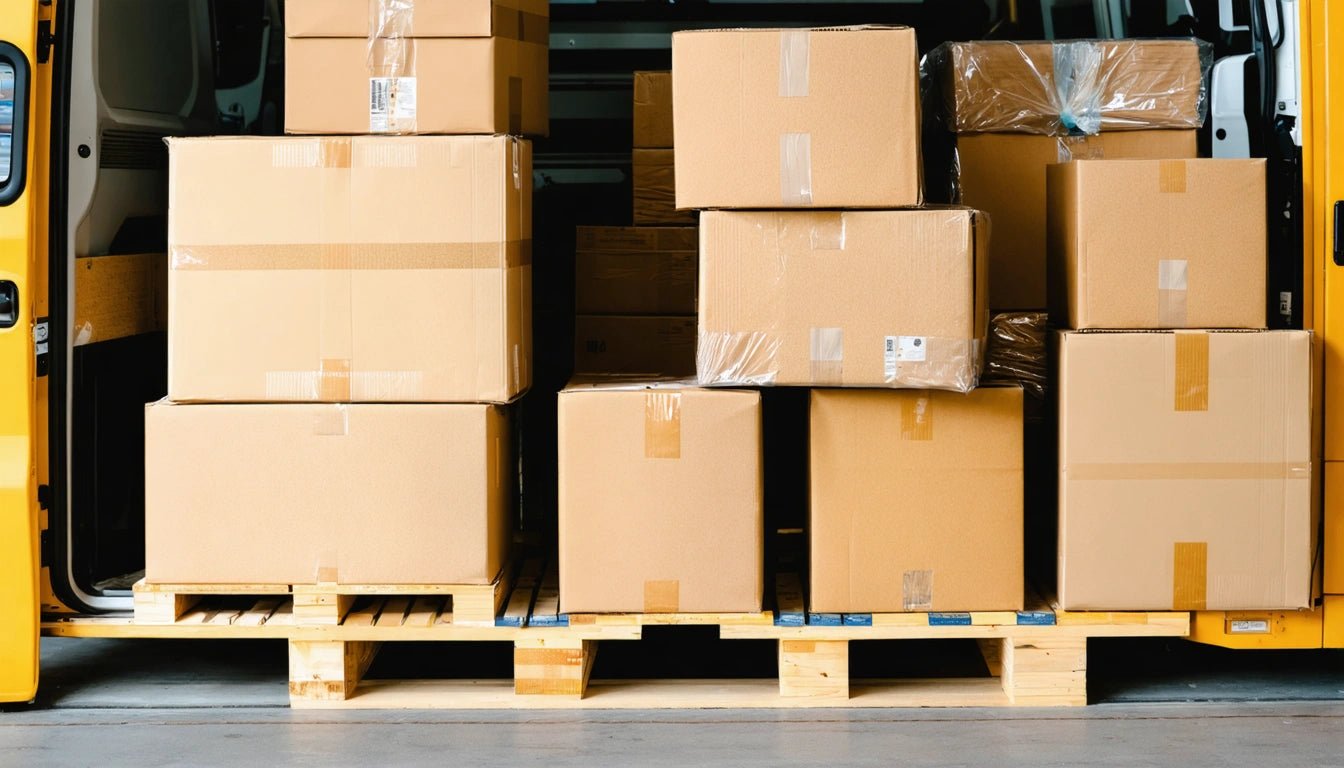Table of Contents
Comprehensive Guide to Shipping Large and Bulky Packages Efficiently
Shipping large, heavy, or bulky items presents unique challenges that require careful planning and strategic decision-making. Whether you're moving furniture, sending equipment, or shipping oversized merchandise, understanding the best practices for handling large packages can save time, money, and prevent damage during transit.
Choosing the Right Carrier for Large Packages
When determining how to ship large packages, selecting the appropriate carrier is crucial. Each major shipping service has different weight limits, dimensional restrictions, and pricing structures for oversized items.
USPS for Large Packages
The United States Postal Service offers several options for shipping large items:
- Retail Ground: Maximum weight of 70 lbs and combined length and girth up to 130 inches
- Priority Mail: Similar size restrictions but faster delivery times
- Parcel Select: Cost-effective for heavier packages but with longer transit times
USPS typically works best for items that are large but not extremely heavy, similar to how books are efficiently shipped despite their weight.
FedEx and UPS for Oversized Shipments
For truly oversized items, FedEx and UPS offer more robust solutions:
- FedEx Home Delivery/Ground: Accepts packages up to 150 lbs and 165 inches in length plus girth
- UPS Ground: Handles packages up to 150 lbs and maximum dimensions of 165 inches
- Both carriers offer freight services for items exceeding these limitations
These carriers provide more specialized handling for oversized shipments, which is essential when figuring out how to ship big items safely.
Proper Packaging Techniques for Oversized Items
The packaging approach for large items differs significantly from standard parcels. Proper techniques ensure your shipment arrives intact while minimizing dimensional weight charges.
Selecting Appropriate Packaging Materials
For large or bulky items, consider:
- Double-walled or triple-walled corrugated boxes for heavier items
- Custom crates for extremely fragile or valuable large objects
- Reinforced corners and edges to prevent structural collapse
- Specialized packaging solutions like protective blister packaging systems that offer excellent protection while minimizing dimensional space
Finding the right balance between protection and package size is crucial, as choosing appropriate shipping boxes directly impacts both safety and cost.
Cost-Saving Strategies for Shipping Bulky Items
Shipping large packages can be expensive, but several strategies can help reduce costs without compromising safety.
Understanding Dimensional Weight
Carriers calculate shipping costs based on whichever is greater: the actual weight or the dimensional weight. To calculate dimensional weight:
- Measure length, width, and height in inches
- Multiply these dimensions together
- Divide by the carrier's divisor (typically 139 for domestic shipments)
- Round up to the nearest pound
This calculation explains why learning how to ship large packages efficiently often means minimizing empty space in your packaging.
Consolidation and Freight Options
For multiple large items, consider:
- Consolidating shipments to qualify for better rates
- Less-than-truckload (LTL) freight for items over 150 lbs
- Negotiated rates with carriers for regular large shipments
These approaches are similar to strategies used for bulk shipping computers and other commercial goods.
International Shipping Considerations for Large Packages
Shipping large packages internationally introduces additional complexity, especially when determining how much it costs to ship large packages across borders.
Documentation and Customs
International shipments require:
- Detailed customs declarations with accurate item descriptions and values
- Harmonized System (HS) codes for proper classification
- Commercial invoices and potentially certificates of origin
When considering how much is it to send a package to Mexico or other international destinations, remember that duties and taxes will add to the base shipping cost.
International Carrier Options
For international large package shipping:
- DHL often excels for truly global destinations
- FedEx and UPS provide robust tracking for high-value large items
- Freight forwarders can offer cost advantages for extremely large shipments
The approach varies depending on destination, much like shipping specialized items like live plants requires carrier-specific considerations.
Specialty Shipping Solutions for Unusual Dimensions
Some large items have unusual dimensions or special handling requirements that demand custom solutions.
White Glove Services
For high-value, fragile, or complex large items:
- White glove delivery services include special handling, indoor placement, and sometimes assembly
- These premium services are ideal for antiques, artwork, or sensitive equipment
- Similar precautions are needed when shipping fragile items of any size
Future Innovations in Large Item Shipping
The landscape for shipping large and bulky items continues to evolve with several promising developments:
- Advanced packaging materials that reduce weight while maintaining protection
- AI-powered logistics platforms that optimize routing for oversized items
- Specialized last-mile delivery solutions for urban areas
- Sustainable packaging alternatives that reduce environmental impact
These innovations are making it increasingly practical and cost-effective to ship large objects across both domestic and international boundaries.



















